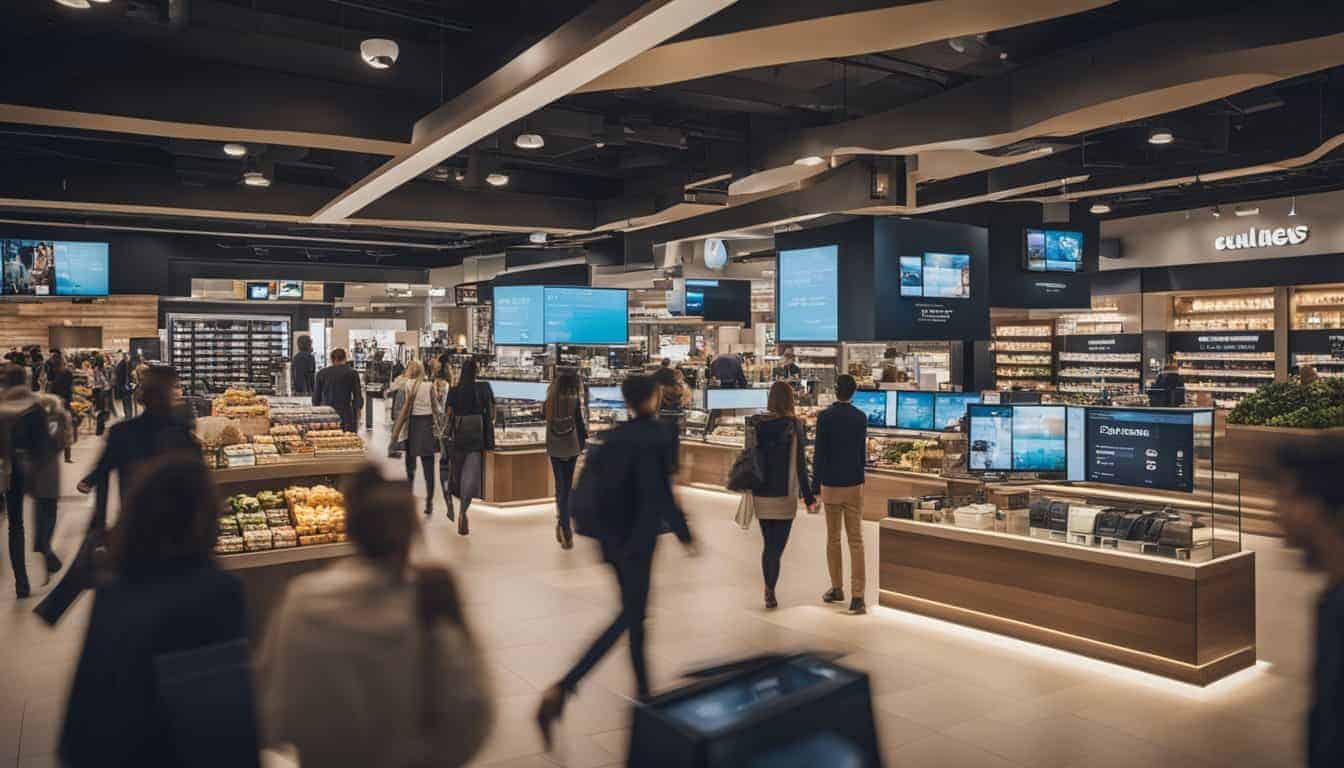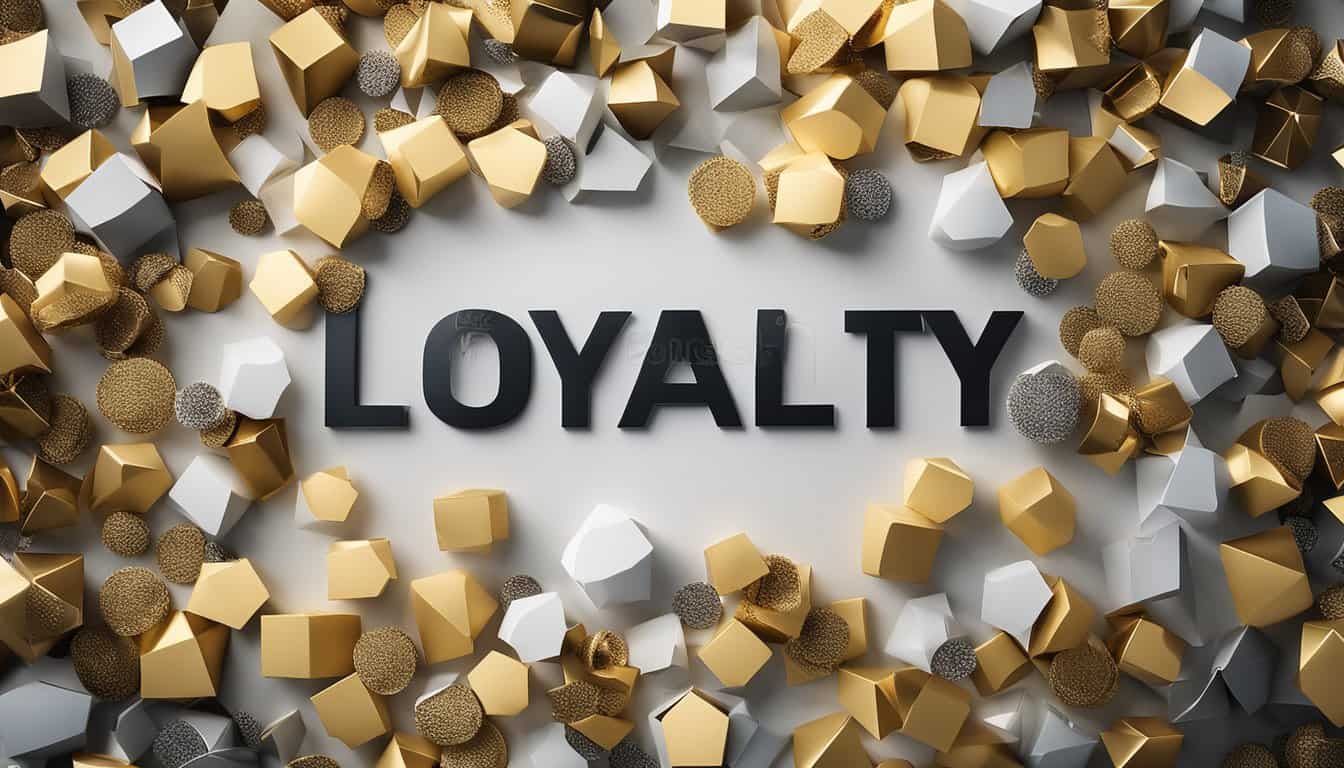Creative Way To Attract & Retain Your Customers
Loyalty program marketing is a powerful tool for businesses to retain customers and drive revenue growth. By offering rewards, incentives, and personalised experiences, companies can create a sense of loyalty and emotional connection with their customers. A well-designed loyalty program can help businesses to stand out from the competition, increase customer lifetime value, and build a strong brand reputation.

To create an effective loyalty program, businesses need to understand the foundations of loyalty program marketing. This includes understanding the needs and preferences of their target audience, identifying the key drivers of customer loyalty, and designing a program that aligns with their business goals. Maximising customer engagement is also crucial, as it helps to build trust and foster long-term relationships with customers.
Integrating omnichannel marketing strategies, encouraging customer advocacy, enhancing customer service and feedback, leveraging partnerships and collaborations, and monitoring and increasing profitability are all key tactics that businesses can use to enhance the effectiveness of their loyalty programs. By cultivating long-term customer relationships and innovating loyalty program tactics, companies can stay ahead of the curve and drive sustainable growth.
Key Takeaways
- Loyalty program marketing can help businesses to retain customers and drive revenue growth by creating a sense of loyalty and emotional connection with their customers.
- To create an effective loyalty program, businesses need to understand the foundations of loyalty program marketing, maximise customer engagement, and integrate omnichannel marketing strategies.
- Cultivating long-term customer relationships and innovating loyalty program tactics are key to driving sustainable growth.
Foundations of Loyalty Program Marketing

If you’re looking to grow your business, one of the most effective ways to do so is by implementing a loyalty program. A loyalty program is a marketing strategy designed to incentivize customers to keep coming back to your business. By offering rewards, discounts, or other perks to loyal customers, you can increase customer retention rates and improve customer lifetime value.
Loyalty programs are built on the foundation of customer loyalty. Customer loyalty is the result of a positive customer experience, which can be achieved through excellent customer service, high-quality products, and a seamless shopping experience. When customers feel valued and appreciated, they are more likely to return to your business and recommend it to others.
One of the main benefits of a loyalty program is that it helps you retain existing customers. It’s much easier and more cost-effective to retain a customer than to acquire a new one. By offering rewards and incentives to loyal customers, you can keep them coming back to your business and increase their lifetime value.
Customer satisfaction is another key component of loyalty program marketing. When customers are satisfied with their experience with your business, they are more likely to become repeat customers and recommend your business to others. By measuring customer satisfaction and using that feedback to improve your business, you can create a positive feedback loop that leads to increased customer loyalty and retention.
In addition to customer satisfaction, retention rates are also important when it comes to loyalty program marketing. Retention rates refer to the percentage of customers who continue to do business with your company over time. By increasing retention rates, you can improve customer lifetime value and reduce churn.
Overall, loyalty program marketing is an exciting and effective way to grow your business. By focusing on customer loyalty, retention, and satisfaction, you can create a loyal customer base that will help your business thrive.
Designing Effective Loyalty Programs

Creating a successful loyalty program is all about understanding what your customers want and need. It’s not just about offering discounts or freebies, but rather creating an experience that makes your customers feel valued and appreciated. Here are some key elements to consider when designing your loyalty program.
Creating a Points System
One of the most common types of loyalty programs is a points-based system. Customers earn points for making purchases, which they can then redeem for rewards. When creating a points system, it’s important to consider the value of the points and how quickly customers can earn them. You want to strike a balance between making the rewards attainable but also valuable enough to motivate customers to participate.
Tiered Rewards Structures
Another effective loyalty program structure is a tiered rewards system. This involves offering different levels of rewards based on the customer’s loyalty status. For example, customers who have been with your business for a longer period of time or have made more purchases could be eligible for higher-tier rewards. This structure encourages customers to keep coming back and making more purchases to reach the next level.
Personalisation and Preferences
Innovation and flexibility are key to designing a successful loyalty program. Personalisation and preferences are important factors to consider when designing a loyalty program. Customers want to feel like they are being rewarded for their individual preferences and behaviours. Consider offering personalised rewards based on their purchase history, or allowing customers to choose the rewards they want.
Overall, designing an effective loyalty program requires a deep understanding of your customers’ preferences, behaviours, and needs. By creating a points system, tiered rewards structure, and offering personalisation and preferences, you can create a loyalty program that keeps your customers coming back for more.
Maximising Customer Engagement

Loyalty programs are a great way to increase customer engagement and build long-lasting relationships with your customers. To maximise customer engagement, it is important to offer exclusive offers and discounts, early access and notifications, and gamification and giveaways.
Exclusive Offers and Discounts
One of the most effective ways to increase customer engagement is by offering exclusive offers and discounts to your loyal customers. This can be in the form of special discounts, free gifts, or limited-time offers. By offering exclusive offers and discounts, you are showing your customers that you value their loyalty and are willing to reward them for it.
Early Access and Notifications
Another effective way to increase customer engagement is by offering early access and notifications to your loyal customers. This can be in the form of early access to new products or services, or notifications about upcoming sales or promotions. By offering early access and notifications, you are keeping your customers engaged and informed, and making them feel like they are part of an exclusive club.
Gamification and Giveaways
Gamification and giveaways are also great ways to increase customer engagement. By offering games or contests that reward customers for their loyalty, you are creating a fun and engaging experience that keeps them coming back for more. Giveaways are also a great way to reward your loyal customers and create an emotional connection with them.
To maximise customer engagement, it is important to consider the entire customer journey and user experience. This includes creating a seamless and enjoyable experience from the moment they sign up for your loyalty program to the moment they redeem their rewards. It is also important to create an emotional connection with your customers and celebrate their milestones, such as their birthdays or the anniversary of their membership.
In summary, maximising customer engagement is key to the success of any loyalty program. By offering exclusive offers and discounts, early access and notifications, and gamification and giveaways, you can create a fun and engaging experience that keeps your customers coming back for more.
Integrating Omnichannel Marketing Strategies

To maximise the effectiveness of your loyalty program marketing, it is essential to integrate omnichannel marketing strategies. This approach ensures that your marketing efforts are consistent across all channels and touchpoints, providing a seamless experience for your customers.
Utilising Social Media
Social media platforms are a powerful tool for promoting your loyalty program. With billions of active users, social media provides a vast market for your brand to reach. Utilise social media to showcase your program’s unique value proposition and encourage customers to join. You can also use social media to create a sense of community around your program, encouraging customers to engage with your brand and each other.
Leveraging Customer Data
Customer data is a valuable resource for loyalty program marketing. By leveraging customer data, you can personalise your marketing efforts, creating targeted campaigns that resonate with your customers. Use data to understand your customers’ behaviour and preferences, tailoring your messaging to their interests. This approach will increase the effectiveness of your marketing efforts, driving engagement and participation in your loyalty program.
Cross-Channel Promotions
Cross-channel promotions are a powerful way to promote your loyalty program across all channels. By offering promotions across digital and offline platforms, you can reach customers wherever they are. Use your online community to promote your program, encouraging customers to share their experiences and refer friends. You can also use in-store promotions to drive sign-ups and participation in your program.
In conclusion, integrating omnichannel marketing strategies is essential for the success of your loyalty program. Utilising social media, leveraging customer data, and cross-channel promotions are just a few ways to maximise the effectiveness of your marketing efforts. By creating a seamless experience for your customers across all channels, you can drive engagement and participation in your program, ultimately increasing customer loyalty and retention.
Encouraging Customer Advocacy

Customer advocacy is a powerful marketing tool that can help you acquire new customers, retain existing ones, and increase brand awareness. By encouraging your satisfied customers to become brand evangelists, you can tap into the power of word-of-mouth marketing and generate a steady stream of referrals and user-generated content.
Referral Programs
One of the most effective ways to encourage customer advocacy is by implementing a referral program. Referral programs incentivize satisfied customers to refer their friends and family to your business in exchange for rewards or discounts. This can help you acquire new customers at a lower cost than traditional marketing methods, while also increasing customer loyalty and engagement.
To create a successful referral program, make sure to offer rewards that are valuable to your customers. This could be a discount on their next purchase, a free product or service, or even cash rewards. You should also make it easy for customers to refer their friends by providing them with a unique referral link or code that they can share on social media or via email.
User-Generated Content
User-generated content is another powerful tool for encouraging customer advocacy. By encouraging your customers to share their experiences with your brand on social media, you can increase brand awareness and generate valuable social proof. This can include customer testimonials, product reviews, or even user-generated photos and videos.
To encourage user-generated content, make sure to provide your customers with a clear call-to-action. This could be as simple as asking them to share their experience on social media using a specific hashtag or by providing them with a template for a product review. You should also make it easy for customers to share their content by providing them with social sharing buttons or by reposting their content on your own social media channels.
Brand Evangelists
Finally, brand evangelists are your most loyal and enthusiastic customers who are willing to go above and beyond to promote your brand. These customers can be a powerful asset for your marketing efforts, as they can help you generate buzz and increase brand awareness.
To identify your brand evangelists, look for customers who have a high level of engagement with your brand, such as those who frequently leave product reviews or share your content on social media. Once you’ve identified your brand evangelists, make sure to nurture these relationships by providing them with exclusive rewards or opportunities to engage with your brand.
In conclusion, encouraging customer advocacy is an essential part of any successful loyalty program marketing strategy. By implementing referral programs, encouraging user-generated content, and nurturing your brand evangelists, you can tap into the power of word-of-mouth marketing and generate a steady stream of referrals and user-generated content.
Enhancing Customer Service and Feedback

As a business owner, you know that customer satisfaction is key to the success of your loyalty program. Enhancing your customer service and feedback mechanisms is a great way to improve customer satisfaction and increase loyalty. Here are two effective ways to achieve this:
Conducting Surveys and Reporting
Conducting surveys is a great way to gather feedback from your customers. Keep your surveys short and simple, and use open-ended questions to allow for detailed feedback. To encourage participation, consider offering incentives such as discounts or rewards. You can use online survey tools like SurveyMonkey or Google Forms to create and distribute your surveys.
Reporting is equally important. Analyzing the data collected from your surveys can provide valuable insights into your customers’ needs and preferences. Use this information to improve your products and services, and to tailor your loyalty program to better meet the needs of your customers.
Responding to Reviews and Feedback
Responding to reviews and feedback is crucial for maintaining customer satisfaction. Whether the feedback is positive or negative, responding in a timely and professional manner shows that you value your customers and their opinions. Responding to negative feedback also provides an opportunity to address any issues and improve your customer service.
Transparency and consistency are key when responding to feedback. Make sure to respond to all reviews, and use a consistent tone and approach. You can also use feedback to improve your training and development programs for your customer service team.
In conclusion, enhancing your customer service and feedback mechanisms is a great way to improve customer satisfaction and increase loyalty. Conducting surveys and reporting, as well as responding to reviews and feedback, are two effective ways to achieve this. Keep your surveys short and simple, respond to all reviews in a timely and professional manner, and use feedback to improve your products, services, and customer interactions.
Leveraging Partnerships and Collaborations

One of the most effective ways to increase customer loyalty is through partnerships and collaborations. By partnering with other businesses, you can offer co-branded rewards that incentivise customers to shop with you. Additionally, partnering with charities and getting involved in the community can help build a positive reputation for your business and improve customer loyalty.
Co-Branded Rewards
Co-branded rewards are a great way to incentivise customers to shop with you. By partnering with other businesses, you can offer rewards that are more appealing to your customers. For example, if you run a hotel, you could partner with an airline to offer customers discounted flights when they book a room with you. This can help increase customer loyalty and drive more business to your hotel.
Another example of co-branded rewards is partnering with a restaurant or coffee shop to offer customers discounts or free items when they shop with you. This can be especially effective if your business is located near the restaurant or coffee shop, as customers may be more likely to visit both businesses if they know they can get a discount.
Charity and Community Involvement
Getting involved in the community and partnering with charities can also help build customer loyalty. Customers are more likely to shop with businesses that are socially responsible and give back to the community. By partnering with a charity, you can show your customers that you care about more than just making a profit.
For example, if you run a car rental business, you could partner with a charity that helps provide transportation for people in need. This can help build a positive reputation for your business and increase customer loyalty.
In conclusion, leveraging partnerships and collaborations can be a highly effective way to increase customer loyalty. By offering co-branded rewards and getting involved in the community, you can build a positive reputation for your business and drive more business to your door.
Monitoring and Increasing Profitability

If you’re running a loyalty program, you’re likely doing it to increase your profitability. To do this, you need to monitor the program’s performance and make adjustments as needed. There are two key areas to focus on when monitoring your program: analysing purchase history and calculating customer lifetime value.
Analysing Purchase History
One of the most important things you can do to monitor your loyalty program’s performance is to analyse your customers’ purchase history. This will help you understand which customers are most loyal and which are not, as well as which products or services are most popular. By doing this, you can identify trends and adjust your program accordingly.
To analyse purchase history, you can use a variety of tools and techniques. For example, you might use a spreadsheet to track purchases over time, or you might use a more sophisticated tool that integrates with your point-of-sale system. Whatever approach you take, the key is to use the data you collect to identify patterns and trends that can help you make informed decisions about your loyalty program.
Calculating Customer Lifetime Value
Another important metric to track when monitoring your loyalty program’s performance is customer lifetime value (CLV). CLV is a measure of how much a customer is worth to your business over the course of their relationship with you. By calculating CLV, you can identify which customers are most valuable to your business and focus your efforts on retaining them.
To calculate CLV, you need to consider a variety of factors, including the customer’s spending habits, the frequency of their purchases, and the length of their relationship with your business. Once you have this information, you can use a simple formula to calculate CLV. This will give you a clear picture of which customers are most valuable to your business and how you can best serve them.
By monitoring purchase history and calculating CLV, you can make informed decisions about your loyalty program that will help you increase profitability over time. So if you’re not already tracking these metrics, now is the time to start!
Cultivating Long-Term Customer Relationships

Loyalty programs are a great way to build long-term relationships with your customers. But, it’s not just about offering rewards and discounts. It’s about creating a memorable experience and fostering trust and values that resonate with your customers.
Trust and Values
Trust is the foundation of any good relationship, including those between businesses and customers. When customers trust your brand, they are more likely to continue doing business with you. Building trust takes time, effort, and consistency. You need to be transparent, honest, and reliable. You can do this by being open about your business practices, listening to customer feedback, and addressing any concerns promptly.
Another way to build trust is to align your brand values with those of your customers. Consumers are more likely to do business with companies that share their values. For example, if you run an eco-friendly establishment, you can attract customers who value sustainability. By promoting your eco-friendly practices and values, you can build a loyal customer base that shares your values.
Consistent Customer Experiences
Consistency is key when it comes to building long-term customer relationships. Customers expect the same level of service and quality every time they visit your location. By providing a consistent customer experience, you can build trust and loyalty.
One way to ensure consistency is to train your staff to provide excellent customer service. Your staff should be knowledgeable, friendly, and helpful. They should be able to answer any questions customers have and provide recommendations when needed.
Another way to ensure consistency is to use technology to your advantage. For example, you can use a customer relationship management (CRM) system to keep track of customer preferences and purchase history. This can help you provide personalised experiences that make customers feel valued.
In conclusion, loyalty programs are a great way to build long-term customer relationships. But, it’s important to remember that they are just one piece of the puzzle. By fostering trust and values and providing consistent customer experiences, you can build a loyal customer base that will continue to do business with you for years to come.
Innovating Loyalty Program Tactics

Are you looking to take your loyalty program to the next level? Successful loyalty programs require innovative tactics that keep up with market trends and digital transformations. Here are two key areas to explore:
Exploring Digital Transformations
In today’s digital age, customer loyalty programmes need to adapt to the latest technologies. One way to do this is by incorporating mobile apps into your loyalty program. By doing so, you can offer customers a seamless experience that allows them to easily track their rewards, make purchases, and engage with your brand.
Another digital transformation to consider is the use of chatbots. Chatbots can provide customers with instant gratification by answering their questions and concerns in real-time. This can help build trust and loyalty with your customers.
Adapting to Market Trends
Market trends are constantly changing, and your loyalty program needs to keep up. One trend to consider is personalisation. By using data analytics, you can tailor your loyalty program to each individual customer, offering them rewards and incentives that are specific to their needs and preferences.
Another trend to consider is gamification. By incorporating game-like elements into your loyalty program, you can make it more engaging and fun for customers. This can include things like challenges, leaderboards, and badges.
Innovation is key to a successful loyalty program. By exploring digital transformations and adapting to market trends, you can create a loyalty program that keeps your customers engaged and loyal to your brand.
Frequently Asked Questions

How can a loyalty programme enhance customer retention?
A loyalty programme can enhance customer retention by incentivising customers to continue purchasing from a business. By offering rewards and benefits to loyal customers, businesses can encourage repeat purchases and increase customer loyalty. According to a guide on loyalty marketing, a loyalty programme can increase customer retention by up to 95%, making it an effective strategy for businesses looking to retain customers.
What innovative rewards can businesses offer through their loyalty schemes?
Businesses can offer a variety of rewards through their loyalty schemes, including discounts, free products, exclusive access to events, and personalised experiences. According to White Label Loyalty, some businesses have even offered unique experiences such as helicopter rides and behind-the-scenes tours as rewards for loyal customers.
In what ways can a loyalty application boost engagement and sales?
A loyalty application can boost engagement and sales by offering a convenient way for customers to access their rewards and benefits. By providing customers with a mobile app, businesses can increase customer engagement and encourage repeat purchases. Additionally, a loyalty app can provide businesses with valuable data on customer behaviour and preferences, allowing them to tailor their marketing efforts accordingly. Salesforce has reported that loyalty programmes with mobile apps have a 20% higher redemption rate than those without.
Could you suggest some creative names for a new loyalty initiative?
Some creative names for a new loyalty initiative could include “Loyal Legends”, “VIP Rewards”, “Frequent Flyers”, “Elite Club”, “Gold Star”, or “Diamond Club”. However, it is important to ensure that the name is relevant to the business and its target audience.
What are the key elements to consider when designing a loyalty programme framework?
When designing a loyalty programme framework, it is important to consider the target audience, the rewards and benefits offered, the redemption process, and the overall customer experience. It is also important to ensure that the programme is easy to understand and use, and that it aligns with the business’s branding and values. Novus Loyalty suggests that a successful loyalty programme should be simple, relevant, and personalised.
How can small businesses implement loyalty programmes without incurring high costs?
Small businesses can implement loyalty programmes without incurring high costs by starting small and gradually expanding the programme as the business grows. This could involve offering simple rewards such as discounts or free products, and using low-cost marketing strategies such as social media and email marketing to promote the programme. Additionally, businesses can consider partnering with other businesses to offer joint loyalty programmes, which can help to reduce costs and increase exposure.




